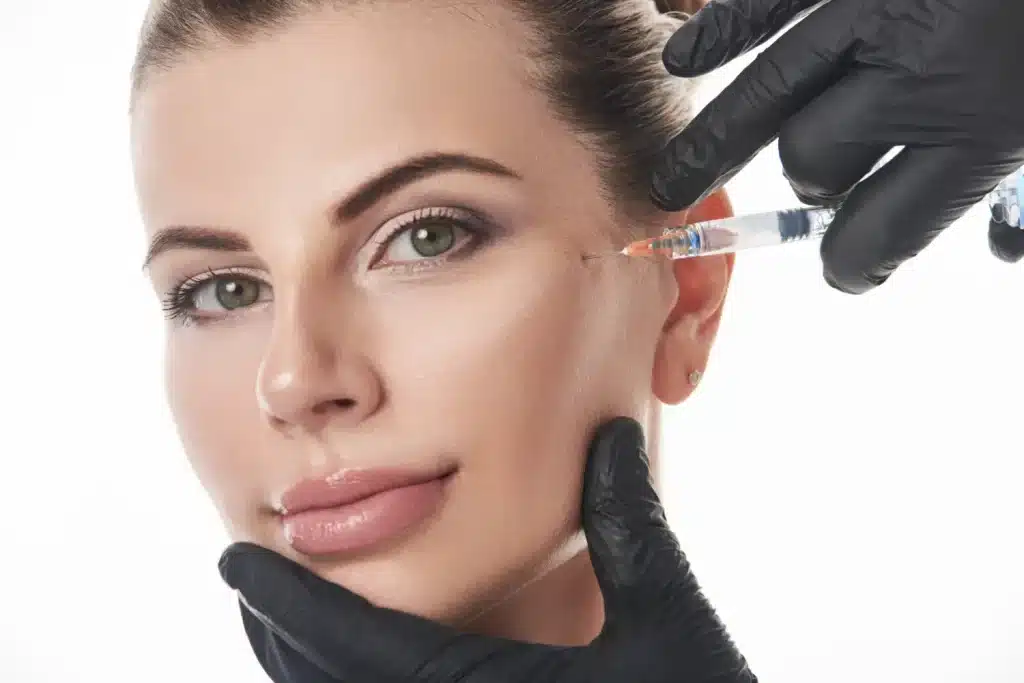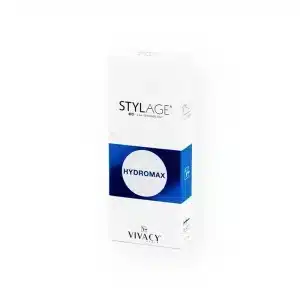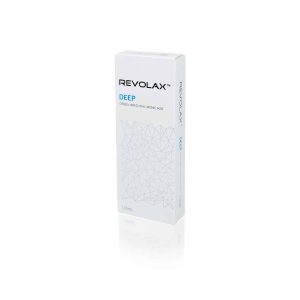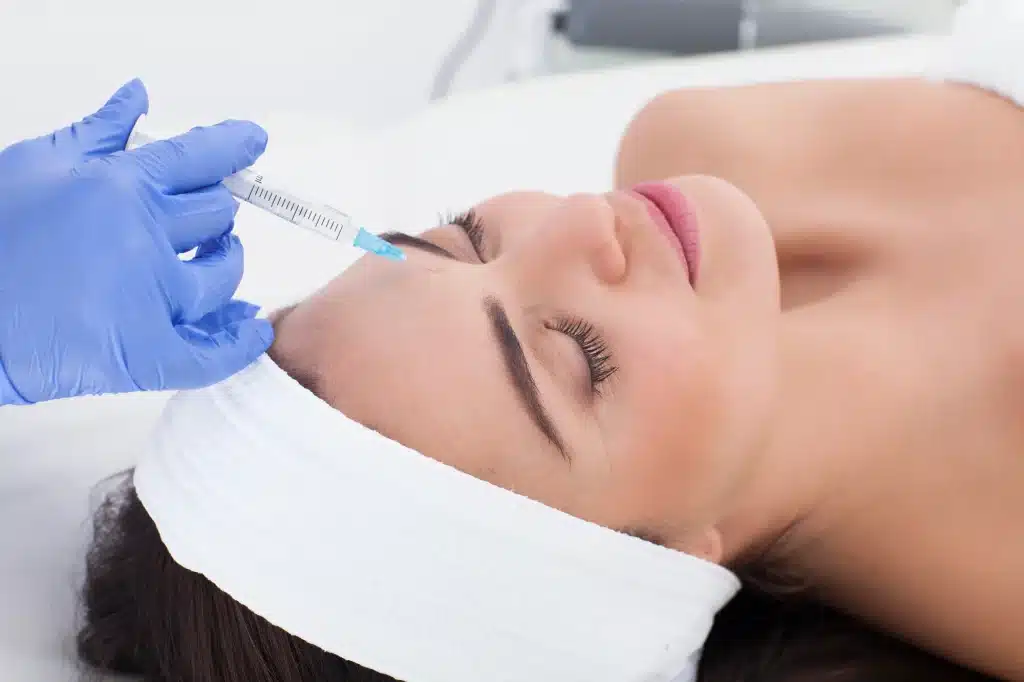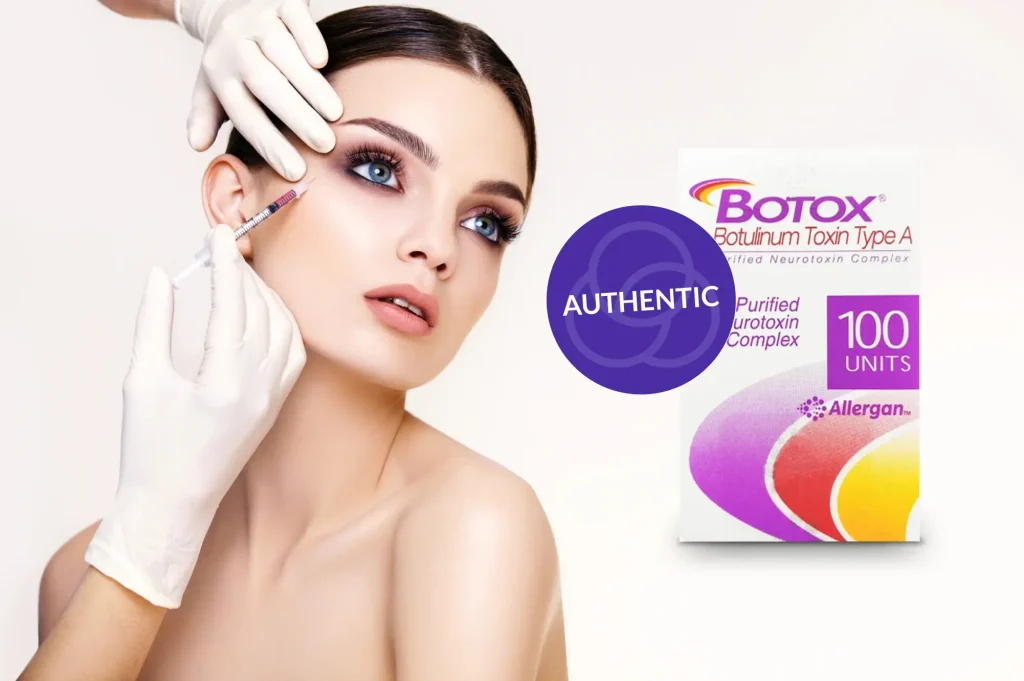The global market for skin rejuvenation treatments is experiencing rapid growth, with a projected increase of 15.40% from 2023 to 2030. This surge reflects the rising demand for non-invasive procedures that deliver youthful, radiant skin with minimal downtime.
Stylage and Revolax are two popular options in this growing market. Stylage is a premium hyaluronic acid filler renowned for its safety and long-lasting effects. In contrast, Revolax offers a range of versatile dermal fillers designed to address diverse aesthetic concerns with precision and effectiveness. Both products are celebrated for rejuvenating the skin and enhancing facial features.
In this article, we will explore the unique benefits and differences between Stylage and Revolax, helping you make an informed decision about the best option for your skin rejuvenation needs.
Key Takeaways
- Stylage and Revolax are hyaluronic acid-based fillers offering unique benefits tailored to various aesthetic needs.
- Stylage incorporates antioxidants like mannitol for enhanced safety, reduced swelling, and extended longevity.
- Revolax features highly crosslinked hyaluronic acid, providing excellent structure and volume, making it ideal for structural enhancements.
- Stylage is suited for natural, smooth results in lips, while Revolax excels in adding pronounced volume and definition.
- Proper filler selection depends on factors such as treatment area, desired outcomes, and patient preferences for longevity and texture.
About: Medical Spa RX provides medical practices with premium products at the best prices. If you’re looking to buy Stylage for your practice, the sales representatives at Medical Spa RX can give you guidance.
Understanding Stylage and Revolax Fillers
Stylage is a hyaluronic acid-based dermal filler designed to address a range of aesthetic concerns. It’s known for incorporating antioxidants like mannitol, which enhance the longevity and safety of the filler. Stylage offers a variety of formulations, catering to different treatment areas and levels of correction.
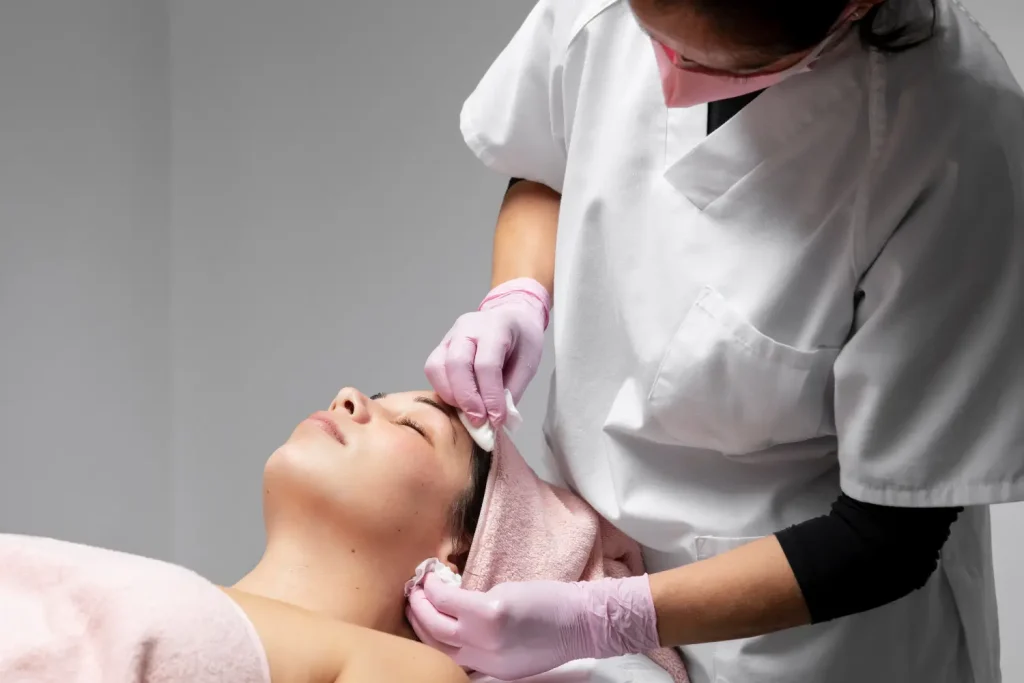
Revolax, another leading dermal filler, is formulated with crosslinked hyaluronic acid. This feature ensures the filler provides volume and structure to the treated areas. Revolax is praised for its affordability and efficacy, making it a popular choice among professionals and patients alike.
Comparing Formulations and Benefits
Stylage fillers are formulated with a patented IPN-like technology that ensures smooth integration into the skin. Combined with mannitol, this technology reduces post-treatment swelling and prolongs the filler’s effects. Stylage also offers products specifically designed for different areas, such as:
- Lips: Stylage Special Lips ensures natural hydration and volume with minimal swelling.
- Nasolabial Folds: Stylage M and XL effectively smooth deeper folds while maintaining a natural appearance.
- Jawline Contouring: Stylage XL and XXL add structure and definition to the jawline, enhancing facial symmetry.
Meanwhile, Revolax fillers use highly purified, crosslinked hyaluronic acid, ensuring durability and stability. Its elastic consistency allows for excellent molding, making it a reliable option for structural enhancements. Revolax variants are designed for specific applications, such as:
- Fine Lines: Revolax Fine is ideal for delicate areas like crow’s feet and superficial wrinkles .
- Deeper Wrinkles and Volume: Revolax Deep is perfect for nasolabial folds and moderate volumization.
- Structural Contouring: Revolax Sub-Q provides maximum support for jawline contouring and facial augmentation.
Choosing the Right Filler for Specific Areas
Stylage and Revolax offer excellent lip enhancement results, but their formulations cater to different preferences. Stylage’s antioxidant-rich formulation helps provide a smoother result with reduced swelling, whereas Revolax’s crosslinked structure offers more volume and longevity.
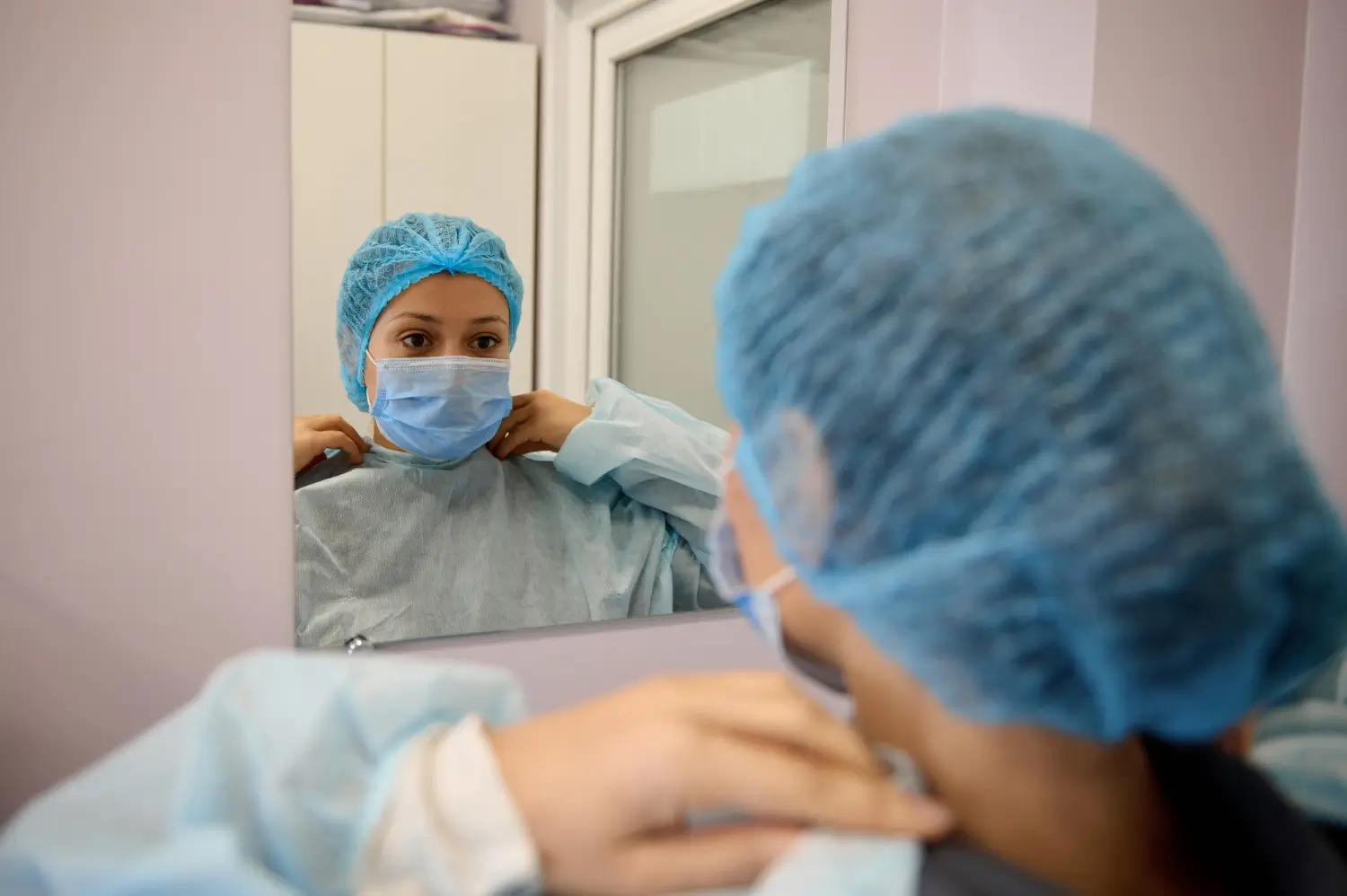
When selecting a lip filler, consider factors such as desired volume, longevity, and potential for swelling. Stylage might be preferable for those looking for a more natural and smooth appearance, while Revolax is ideal for those seeking significant volume and structure.
Meanwhile, nasolabial folds require fillers that can provide significant volume and support. Stylage’s antioxidant properties make it effective for reducing post-injection swelling, whereas Revolax’s crosslinked hyaluronic acid offers substantial structural support.
Consider the severity of the folds and your skin’s reaction to fillers. Stylage might be better for those with sensitive skin, while Revolax is suitable for deeper folds needing more substantial support.
For jawline contouring, this treatment requires fillers that provide strong support and definition. Stylage offers a smoother finish with its antioxidant formulation, while Revolax provides a more defined structure due to its crosslinked hyaluronic acid.
When choosing a filler for the jawline, consider the desired level of definition and longevity. Stylage can provide a natural, smooth contour, whereas Revolax is ideal for those seeking a more pronounced and longer-lasting structure.
Tailoring Filler Choice for Best Results
- Product Consistency and Longevity: A filler’s consistency determines how well it integrates into the skin and the type of results it provides. Stylage, with its smoother consistency, is ideal for achieving a natural look, while Revolax’s thicker consistency is perfect for adding significant volume. Stylage offers extended longevity by neutralizing free radicals. Revolax also provides long-lasting results but is more structured.
- Potential Side Effects and Safety: These fillers are generally safe, but they can cause side effects like swelling, redness, and bruising. Stylage’s antioxidants help reduce swelling, while Revolax’s formulation ensures minimal discomfort. Comparing fillers like Stylage vs Revanesse can further highlight how these products prioritize safety and patient satisfaction through unique formulations.
Conclusion
Stylage and Revolax are two leading dermal fillers, each offering distinct advantages tailored to different aesthetic goals. Stylage excels in providing natural results with antioxidant protection, while Revolax stands out for its structural support and affordability. Choosing the right filler depends on the treatment area, patient preferences, and desired outcomes.
By understanding their unique formulations and benefits, practitioners and patients can achieve safe, effective, and personalized treatments for radiant, youthful skin.
FAQs
1. What are the primary differences between Stylage and Revolax fillers?
Stylage includes antioxidants for reduced swelling and prolonged effects, while Revolax uses highly crosslinked hyaluronic acid for added structure and volume. Both cater to different treatment goals and areas.
2. Which filler is better for lip augmentation?
Stylage is ideal for natural-looking hydration and smooth results, while Revolax offers more pronounced volume and definition. The choice depends on the patient’s desired aesthetic.
3. Are Stylage and Revolax fillers safe?
Yes, both fillers are safe when administered by trained professionals. Potential side effects, such as swelling or redness, are typically mild and resolve quickly.
4. How long do Stylage and Revolax fillers last?
Stylage fillers generally last 9–12 months due to their antioxidant protection, while Revolax fillers can last 6–12 months, depending on the treatment area and individual metabolism.
References
Non-invasive Aesthetic Treatment Market Size | Industry Report, 2026. Grand View Research. https://www.grandviewresearch.com/industry-analysis/non-invasive-aesthetic-treatment-market
Pantermehl S, Foth A, Meyer E, Barbeck M, Jung O. In VitroCytocompatibility analysis and comparison of different hyaluronic acid fillers for minimally invasive esthetics. In Vivo. 2024;38(4):1621-1635. doi:10.21873/invivo.13612
